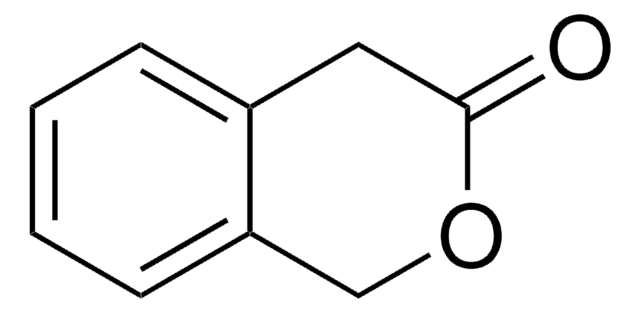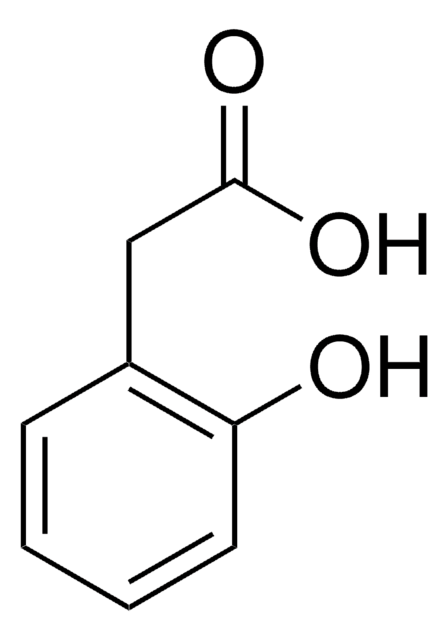All Photos(1)
About This Item
Empirical Formula (Hill Notation):
C8H6O2
CAS Number:
Molecular Weight:
134.13
EC Number:
MDL number:
UNSPSC Code:
12352100
PubChem Substance ID:
NACRES:
NA.22
Recommended Products
Assay
97%
form
powder
bp
248-250 °C (lit.)
mp
49-51 °C (lit.)
solubility
H2O: soluble 3.8 g/L at 30 °C
SMILES string
O=C1Cc2ccccc2O1
InChI
1S/C8H6O2/c9-8-5-6-3-1-2-4-7(6)10-8/h1-4H,5H2
InChI key
ACZGCWSMSTYWDQ-UHFFFAOYSA-N
Gene Information
human ... CYP1A2(1544)
Related Categories
Application
2-Coumaranone has been used to study the effects of coumarins on 7,12-dimethyibenz(a)anthracene induced neoplasia of the rat mammary gland. It was employed as probe for detecting enzymes which hydrolyze 2-hydroxybenzofuran structures.
Signal Word
Warning
Hazard Statements
Precautionary Statements
Hazard Classifications
Eye Irrit. 2 - Skin Irrit. 2 - Skin Sens. 1
Storage Class Code
11 - Combustible Solids
WGK
WGK 3
Flash Point(F)
257.0 °F
Flash Point(C)
125 °C
Personal Protective Equipment
dust mask type N95 (US), Eyeshields, Gloves
Certificates of Analysis (COA)
Search for Certificates of Analysis (COA) by entering the products Lot/Batch Number. Lot and Batch Numbers can be found on a product’s label following the words ‘Lot’ or ‘Batch’.
Already Own This Product?
Find documentation for the products that you have recently purchased in the Document Library.
Inhibition of chemical carcinogen-induced neoplasia by coumarins and alpha-angelicalactone.
L W Wattenberg et al.
Cancer research, 39(5), 1651-1654 (1979-05-01)
V Strubel et al.
FEMS microbiology letters, 49(2-3), 233-238 (1989-04-01)
Dibenzofuran degrading bacteria were enriched from various environmental sources. A mutualistic mixed culture of strain DPO 220 and strain DPO 230 was characterized. Strain DPO 220 alone showed limited growth with dibenzofuran as sole source of carbon and energy (td
Esa R Korpi et al.
Addiction biology, 22(4), 1022-1035 (2016-03-19)
Opioid antagonist treatments reduce alcohol drinking in rodent models and in alcohol-dependent patients, with variable efficacy across different studies. These treatments may suffer from the development of tolerance and opioid receptor supersensitivity, as suggested by preclinical models showing activation of
Eric M Jones et al.
Cell systems, 8(3), 254-260 (2019-03-25)
G protein-coupled receptors (GPCRs) are central to how mammalian cells sense and respond to chemicals. Mammalian olfactory receptors (ORs), the largest family of GPCRs, mediate the sense of smell through activation by small molecules, though for most bonafide ligands, they
Ilaria Zamparo et al.
Cell reports, 29(13), 4334-4348 (2019-12-26)
In mammals, odorant receptors not only detect odors but also define the target in the olfactory bulb, where sensory neurons project to give rise to the sensory map. The odorant receptor is expressed at the cilia, where it binds odorants
Our team of scientists has experience in all areas of research including Life Science, Material Science, Chemical Synthesis, Chromatography, Analytical and many others.
Contact Technical Service







